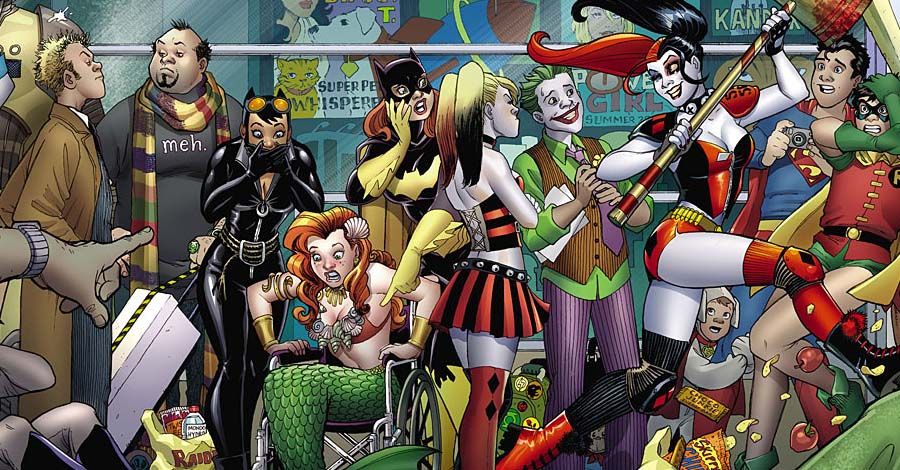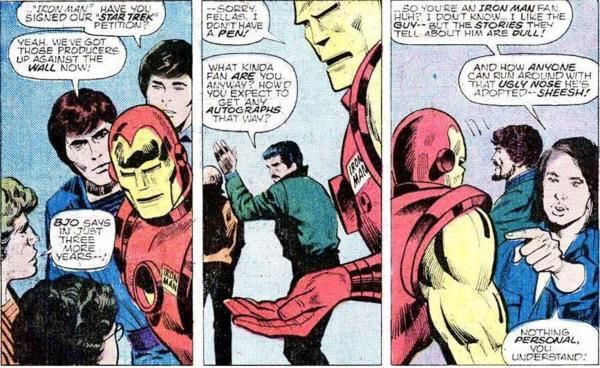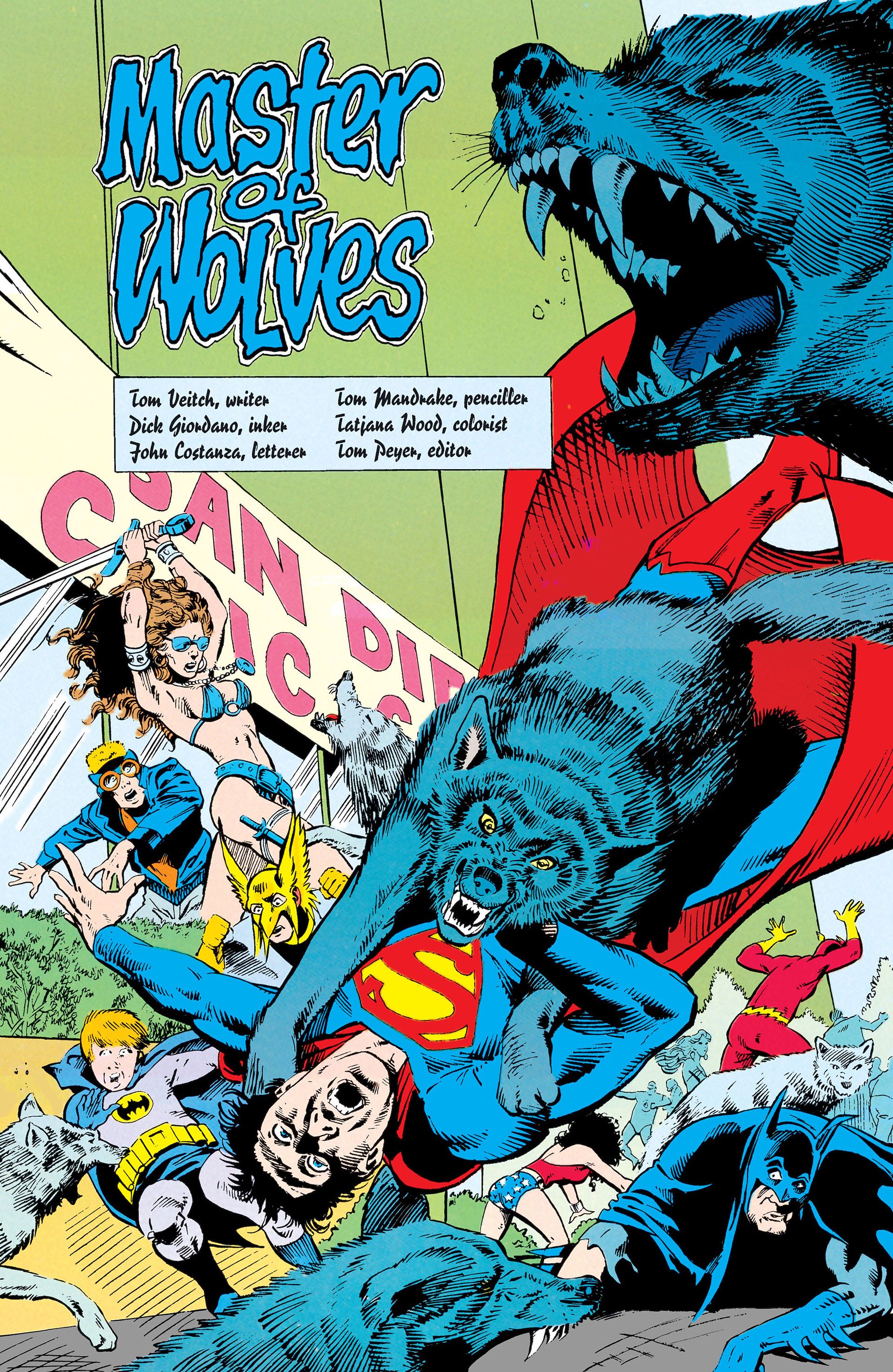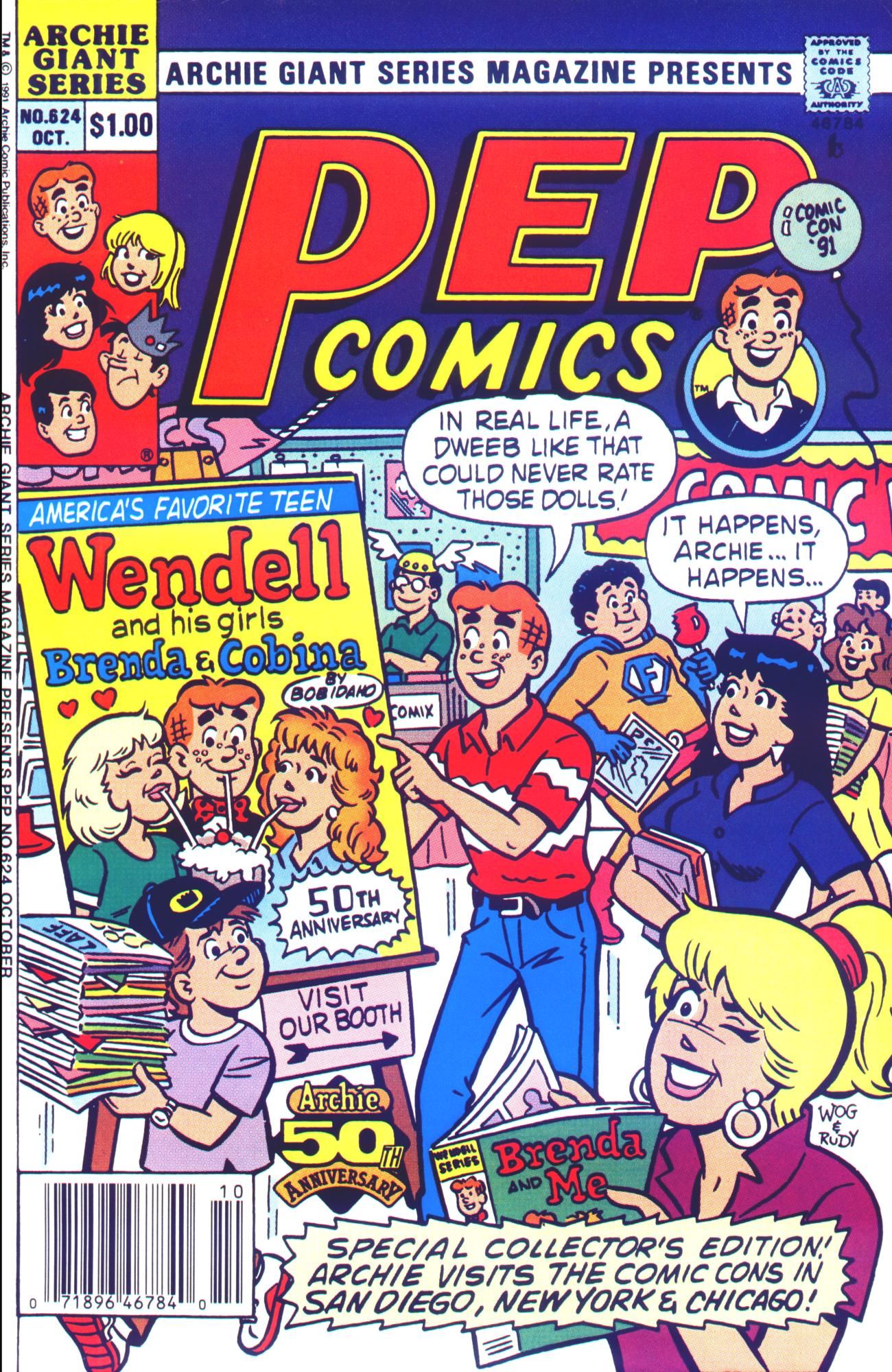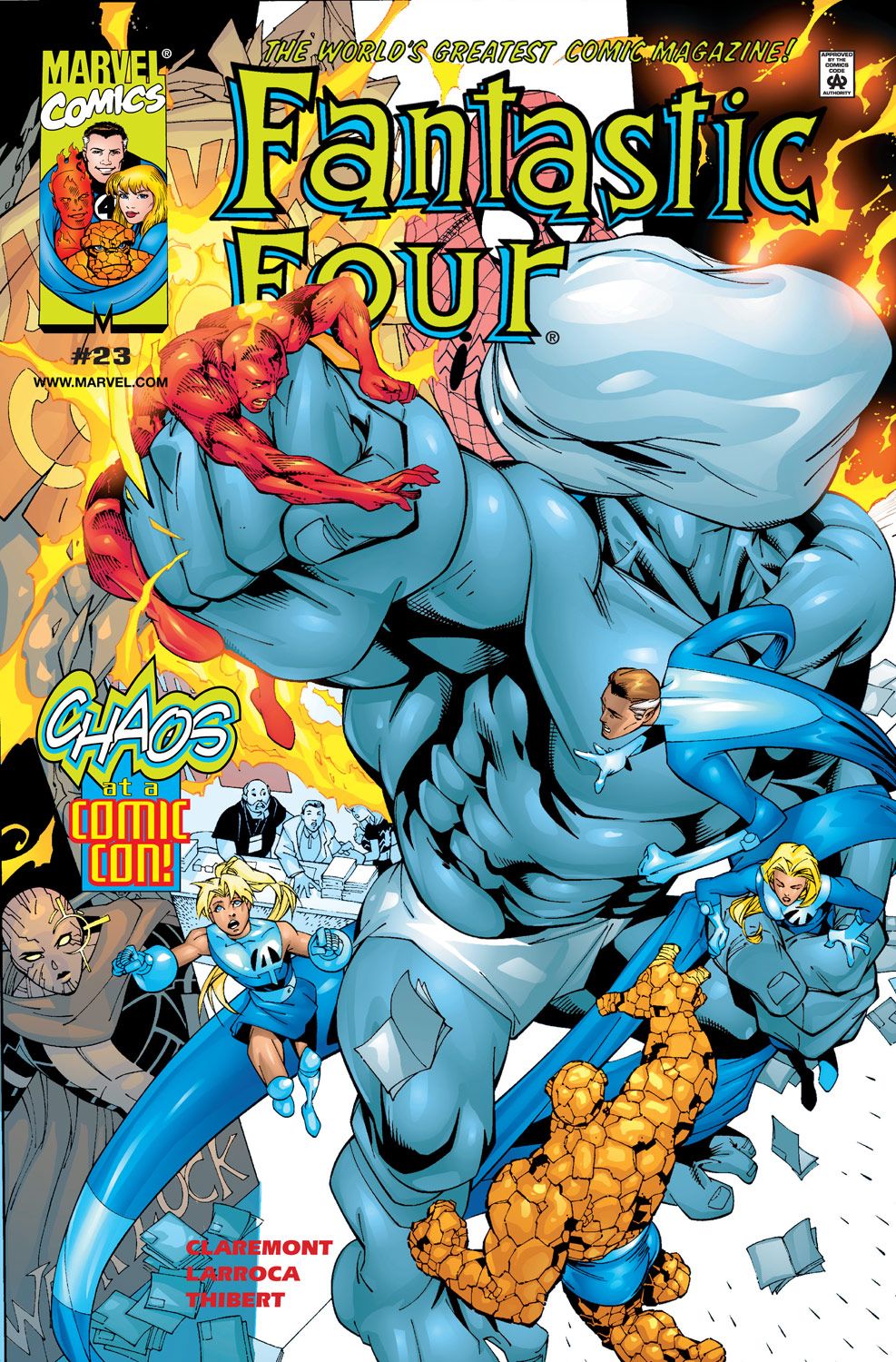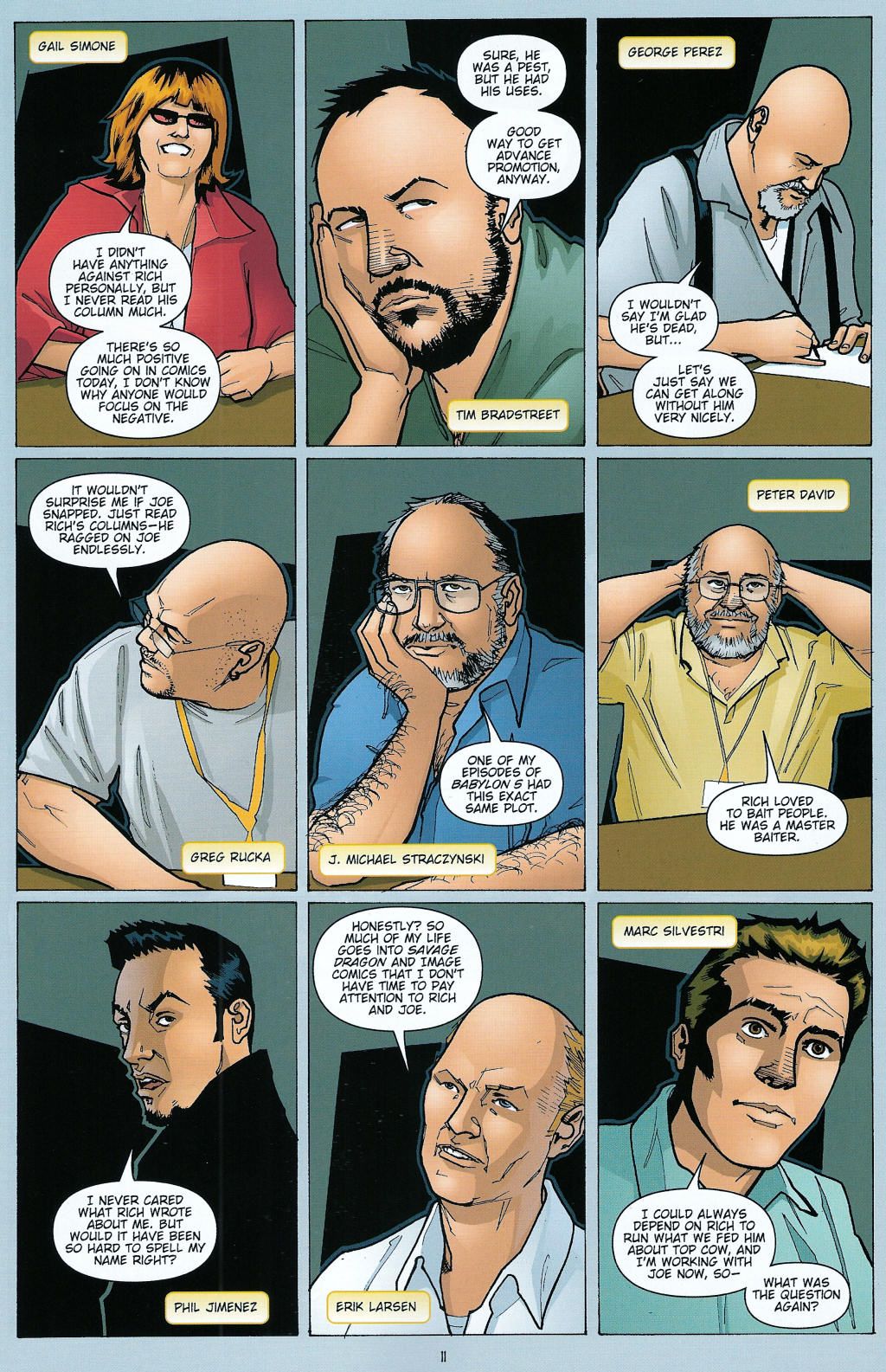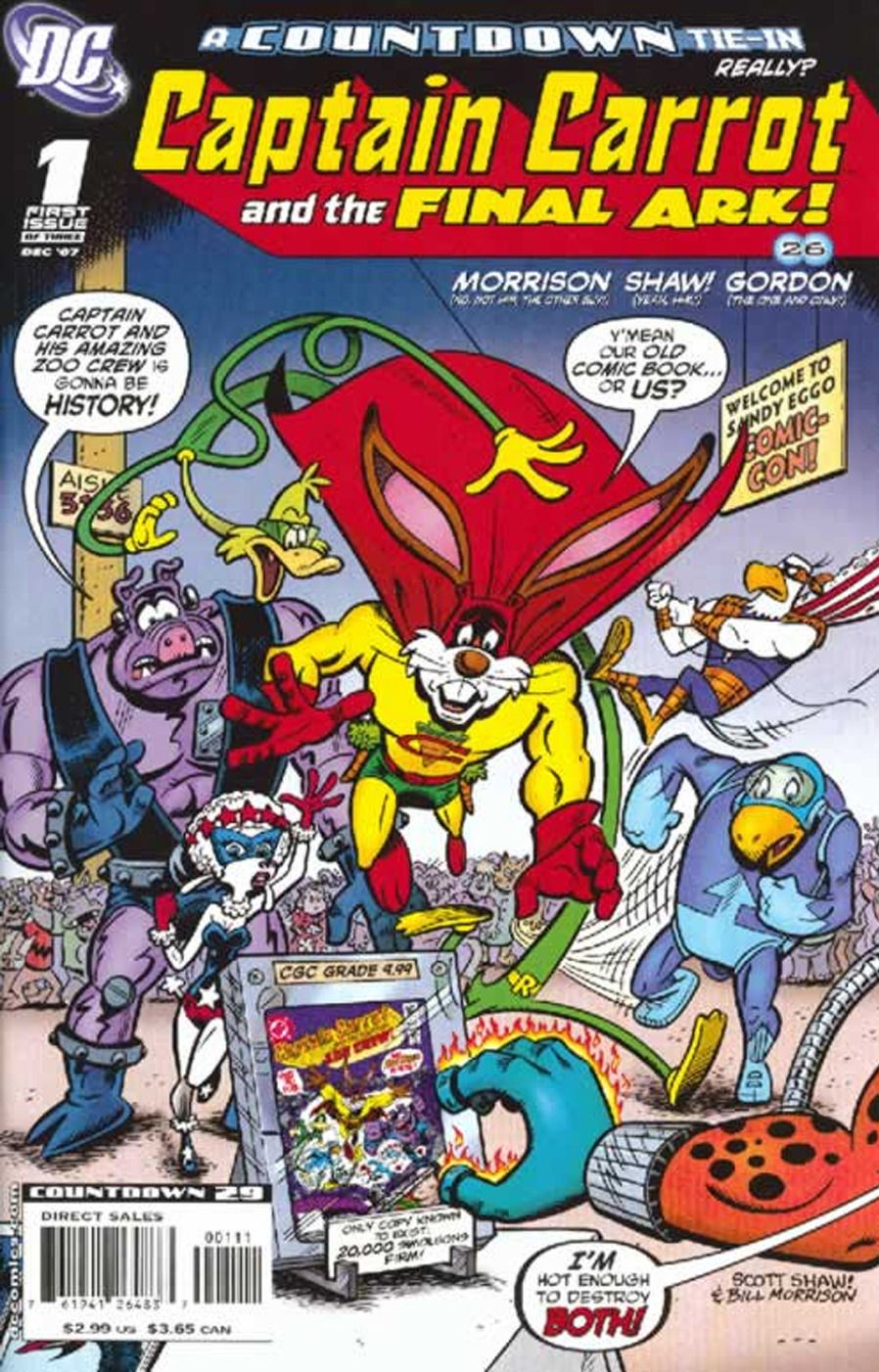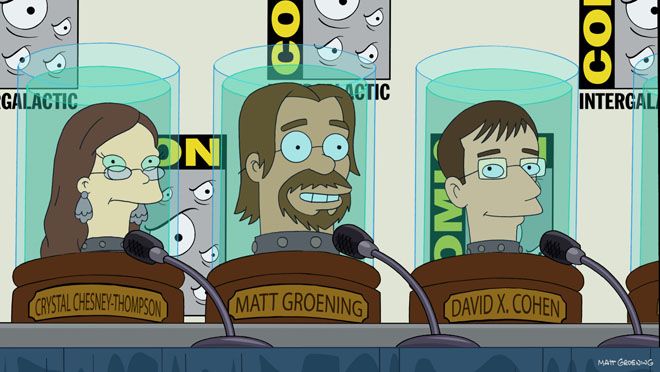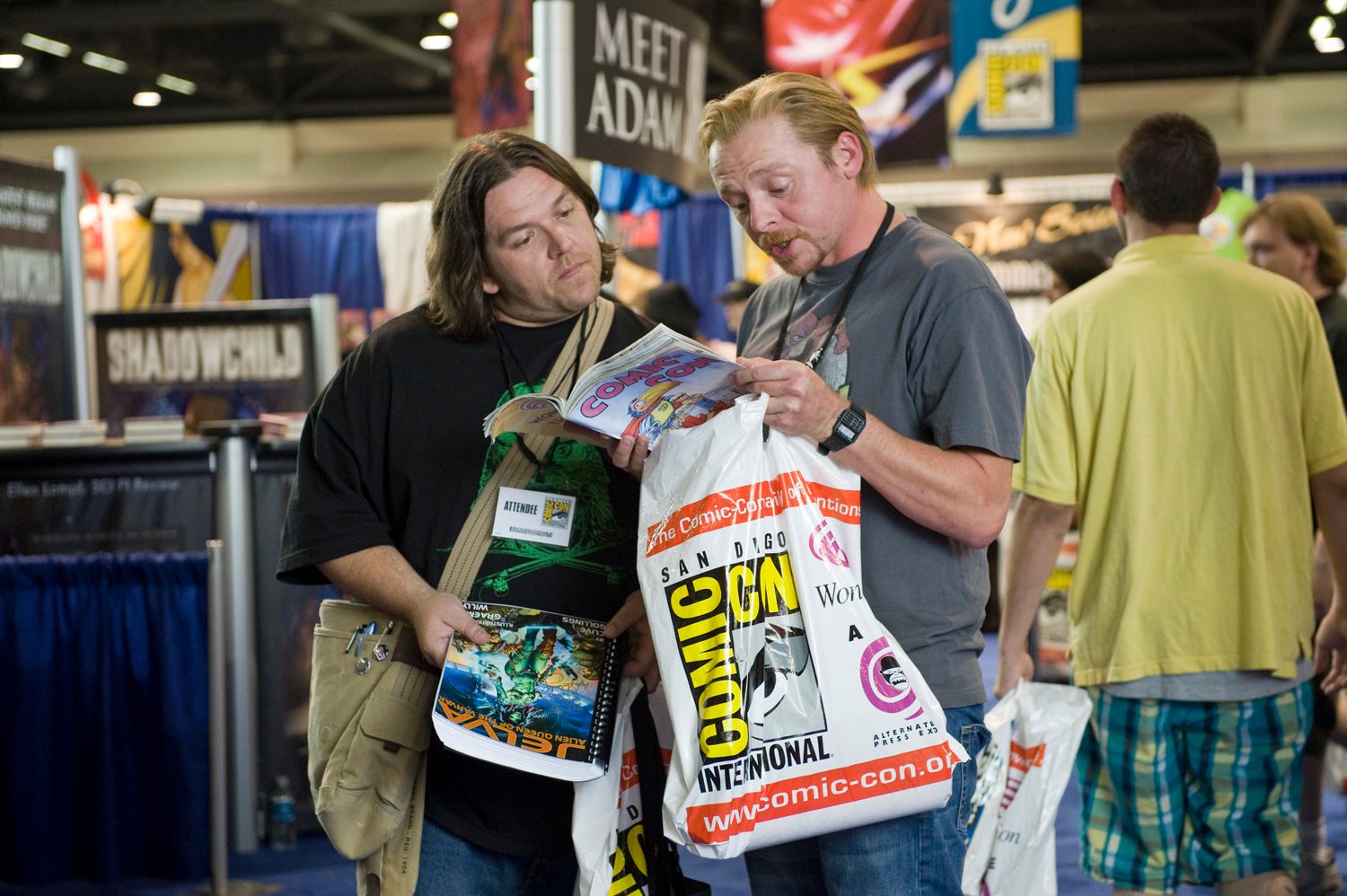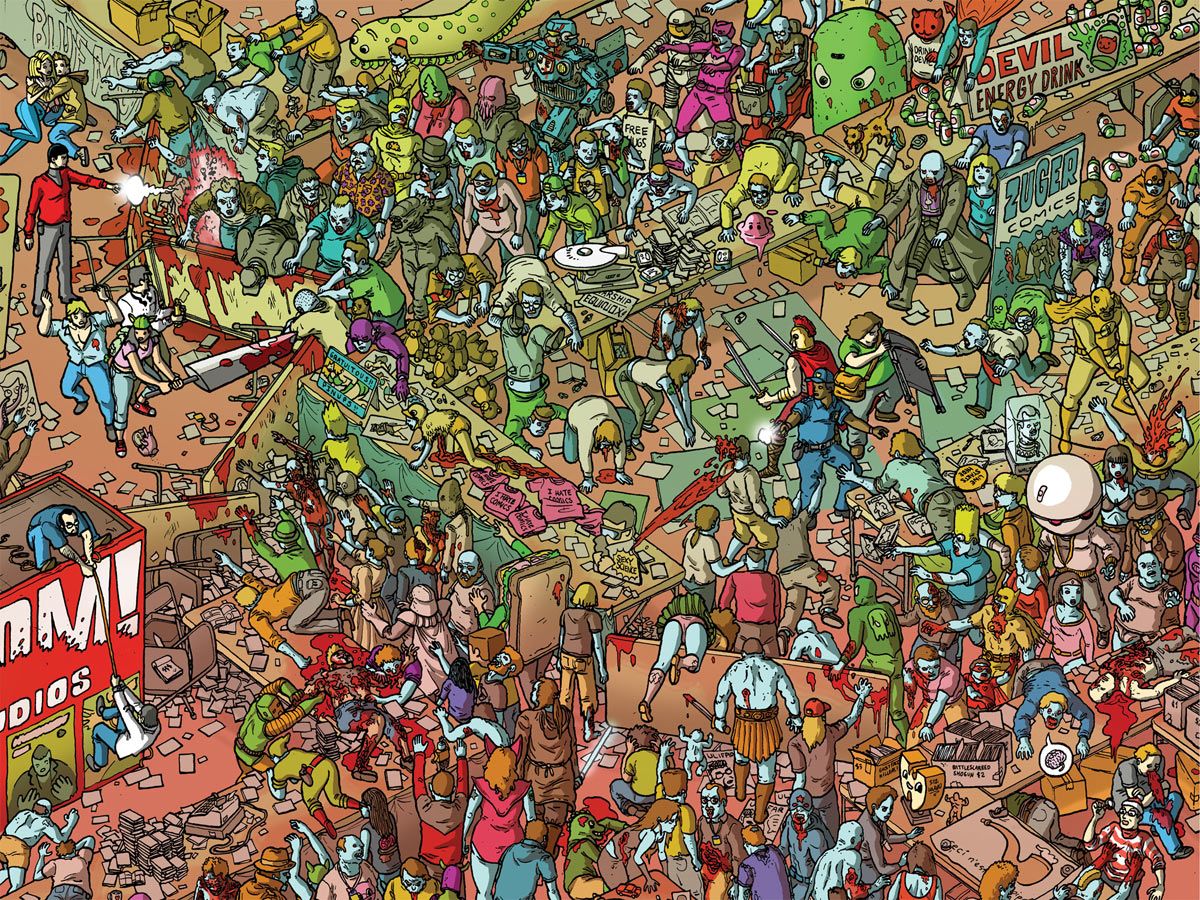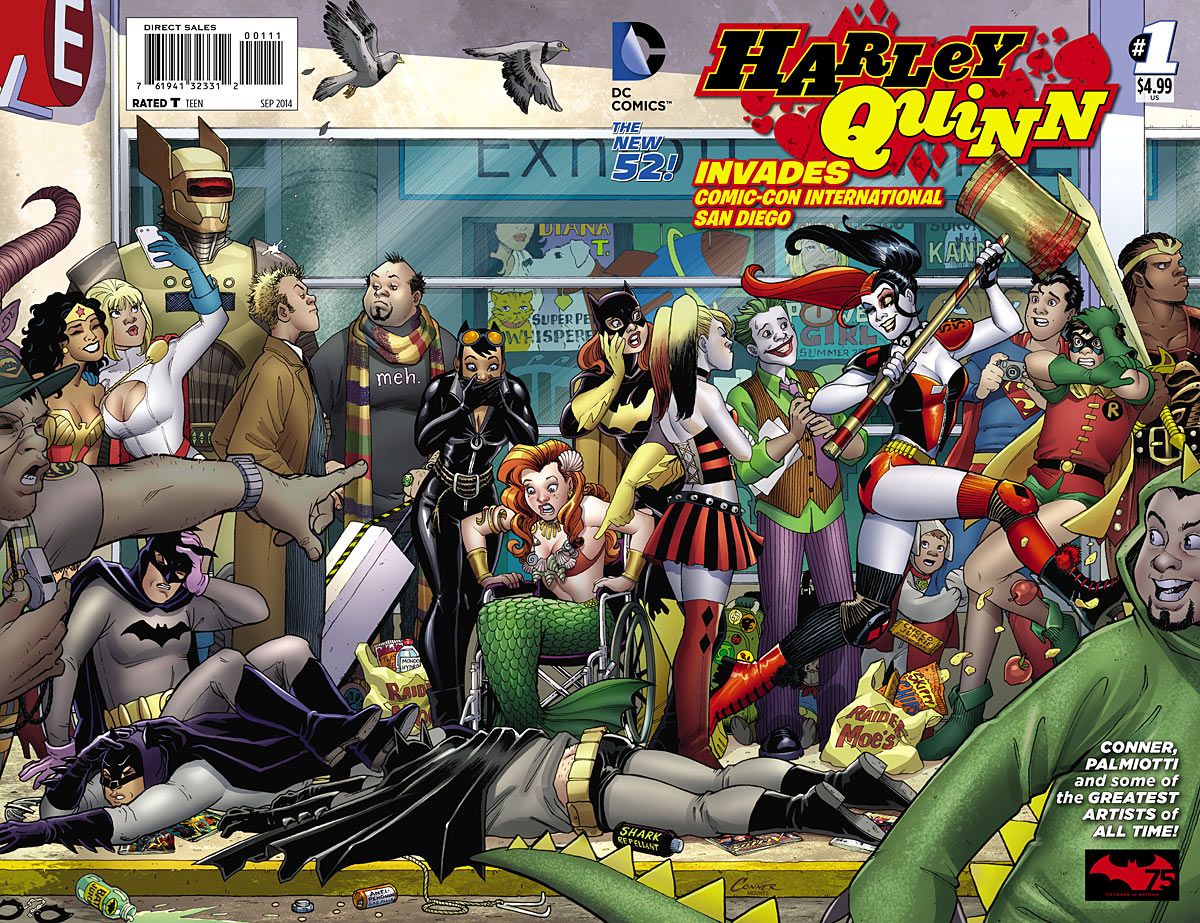It might refer to comic books with its name, but Comic-Con International has become oh, so much more than a celebration of sequential storytelling. In fact, even if you're not a comic reader, you're sure to find something you like represented at the San Diego Convention Center during Comic-Con's yearly occupation.
That doesn't mean that SDCC is random, although it can feel that way. No matter what the year's biggest focus may be, there's a common thread that always ties the convention together. At its heart, Comic-Con celebrates fiction. Superhero comics, manga, video games, science fiction and blockbuster films are different aspects of pop vulture, but they all do the same thing: they tell a story. SDCC is more than just a giant party; it's a gathering of people who have all been touched by the same fictional characters and events.
That's a powerful thing, and as time goes on, it's not surprising that more and more people are telling stories about SDCC itself. After all, most creators are fans too, and even at its most chaotic, SDCC can be quite inspiring. There's no other place where you can gather with that many people (so, so many people) and bond over the things that you love, after all.
Here are some of the best SDCC stories, presented in chronological order:
10 "Iron Man" #72
These days, Comic-Con International is one of the biggest pop-culture events on the planet, but that wasn't always the case. Only 300 people attended the first SDCC in 1970 (then known as the "Golden State Comic-Con"), which was held in San Diego's historic U.S. Grant Hotel.
The convention grew rapidly. In 1974, over 2,500 fans flocked to the El Cortez Hotel, where they participated in the first-ever Masquerade Ball (a tradition that still runs today) and mingled with pop culture luminaries like Frank Capra, Charles Schulz, and even Iron Man himself.
That last guest appeared courtesy of "Iron Man" #72, in which Tony Stark finds himself stranded in San Diego after a business deal goes bust. With time to kill, Stark drops by SDCC -- in his full Iron Man outfit, naturally -- where he's mistaken for a cosplayer years before the term "cosplayer" was even coined. Fans accuse Iron Man of not being a real fan (he didn't bring a pen for autographs), and slam his Iron Man's costume, particularly his "nose." "Didn't realize so much attention would be paid to a simple costume change," Iron Man laments.
Oh, Tony. If only you knew.
9 "Animal Man" #39
Vertigo's late '80s "Animal Man" series is famous for breaking the fourth wall -- remember, this is the comic where creator Grant Morrison appears as a recurring character -- so it's no surprise that Comic-Con International made a brief appearance in the book. In "Animal Man" #39, San Diego's animals run amok. Wolves prowl the suburbs, bats bring the airport to a standstill, and timber wolves chow down on cosplayers at the San Diego Convention Center.
SDCC's appearance isn't anything more than a one-page gag -- most of "Animal Man" #39 deals with Buddy Baker's depression, and how that affects his parenting -- but it's a fun one. After all, this is the only official DC comic that features a Batman wannabe staring down a feral beast while the Flash sees danger and runs as fast as he can -- in the opposite direction.
8 "Archie Giant Series" #624
Archie's friend Chuck Clayton isn't just an accomplished artist. He's also the direct descendant of Charles Clayton, a Revolutionary War-era political cartoonist who published the first-ever comic book, "Poor Charles' Cartoon Almanac."
In "Archie Giant Series" #624, Chuck takes "Poor Charles' Cartoon Almanac" on a tour of America's comic book conventions, making SDCC his last stop. Along the way, Archie and his friends must protect the book from Professor Jacko, a Fredric Wertham-like figure who blames society's ills on comic books and is bent on destroying the "the book that supposedly started it all," as well as Delbert the Dealer, a comic book retailer who grows jealous of all the attention "Poor Charles' Almanac" receives.
To top it all off, along the way Archie discovers that he looks exactly like Wendell, a clumsy but likable comic book character who's caught in the middle of a love-triangle with two women who look suspiciously like Betty and Veronica. As it turns out, "Wendell" is written and drawn by Dan DeCarlo and Stan Goldberg, two of the most prolific and popular "Archie" creators of all time.
7 "Fantastic Four" #23 (1999)
With Ben Grimm stuck in suspended animation following an unexplained rampage, the members of the Fantastic Four could use some downtime. Their solution? Send the Human Torch to Comic-Con. After all, SDCC one of the only places where Johnny can go shopping without looking like the weirdest guy in the room.
Or at least, that's the cover story. Really, Johnny attends San Diego to provide a distraction while the Fantastic Four break into the city's naval base and try to figure out why the Thing went crazy. The entire operation goes south when the Avengers, who show up at the San Diego Convention Center for a charity appearance, are infected by the same nanites that poisoned Mr. Grimm. A full-on brawl breaks out, the Fantastic Four and the Avengers end up facing charges for starting a riot, the Red Skull and the Mad Thinker make off with a S.H.I.E.L.D. Helicarrier, and worst of all, Johnny doesn't have time to pick up a single piece of convention-exclusive swag.
6 "CSI: Crime Scene Investigation: Dying in the Gutters"
While real-life creators often cameo in comic books, they're rarely main characters, and they're almost never villains. That made it pretty surprising when the "CSI: Crime Scene Investigation: Dying in the Gutters" miniseries killed off Rich Johnston, the real-life gossip columnist behind LYING IN THE GUTTERS and Bleeding Cool, and placed the blame on a number of well-known comic book writers, artists and editors.
Johnston is electrocuted during Marvel Editor-in-chief Joe Quesada's panel at the Las Vegas Comic-Con (which is SDCC in all but name, as a concession to the fact that the normal CSI crew operates out of Nevada). After ruling out Gail Simone, George Perez, Erik Larsen and others, CSI settles on Quesada as the prime suspect since, before he died, Johnston threatened to run a story that would ruin Quesada's career.
But every good murder mystery has a twist, and this one's no exception. It turns out that Johnston was just in the wrong place at the wrong time, and Quesada was the killer's real target. Ultimately, Greg Rucka confesses: he blames Quesada for hiring away his writing partner, Ed Brubaker, thus dooming "Gotham Central" to cancellation. It's ridiculous, but makes a twisted kind of sense -- after all, if anyone's going to commit an elaborate murder, who better than an accomplished crime writer?
5 "Captain Carrot and the Final Ark" #1
Captain Carrot isn't one of DC Comics' most well-known characters, but if there's any place where obscure superheroes thrive, it's at SDCC. In "Captain Carrot and the Final Ark," Captain Carrot's alter-ego, comic book writer and artist Rodney Rabbit, is a featured guest at the Sandy Eggo Comic-Con -- Earth-C's San Diego equivalent -- when a villain calling himself the Salamandroid attacks. Rodney transforms into the Captain by eating a cosmic carrot (irradiated by a strange meteor), and saves a collection of rare comics as well as comic creators like Quail Simone, Paul Dinosaur, and Sergio Antelopes.
Unfortunately, Salamandroid gets away, kicking off a "Watchmen"-esque storyline in which the Zoo Crew is forced to register with the government, disbands, and reunites just in time to see their entire world destroyed. The team survives by crossing into the mainstream DC Universe, though they transform into regular animals in the process; at the end of the story, Zatanna takes in Captain Carrot as a pet.
In other words, if you're one of the thousands of people who didn't get tickets for this year's SDCC, well, that might just be for the best.
4 "Futurama" Season 6, Episode 11
There's no way the original Comic-Con founders could have imagined that SDCC would grow into one of the corner stones of the pop culture community. And, according to "Futurama," it's going to remain one well into the future. In the episode "Lrrreconcilable Ndndifferences," Fry visits Comic-Con 3010 to try and sell his comic book, "Delivery Boy Man," to publishers. Surprisingly, in the future, SDCC is pretty much the same as it is now -- the show floor is flooded with sexy costumes, retailers hawk obscure mint-in-box toys, and fans wait long lines to get into star-studded panels. SDCC fixture Sergio Aragones even has the same booth, though it's probably a lot harder for him to draw since he's just a head.
The fun is cut short when intergalactic warlord Lrrr invades, is mistaken for a cosplayer, gets dumped by his wife, and enslaves Earth to get her back. Fry sacrifices his life to save his friends (don't worry -- this is "Futurama," and he's fine, thanks to some sci-fi silliness), which gives him the perfect ending for his comic book -- and earns him Leela's begrudging respect.
3 "Paul" (2011)
If sci-fi pop-culture mash-ups like "Shaun of the Dead," "Hot Fuzz," and "The World's End" didn't convince you, rest assured: Simon Pegg and Nick Frost are huge geeks. Need more proof? Just look at "Paul," the duo's 2011 road-trip comedy.
Pegg and Frost spend most of "Paul" on the run with their new friend, an out-of-place alien voiced by Seth Rogen, but their adventure started at SDCC. In the road trip sci-fi film, Pegg and Frost play two British comic-book fans making their first-ever trip to San Diego; while they're in the United States, they decide to maximize their time and take a road trip across the American Southwest. That's when they meet Paul, as well as Jason Bateman's villainous Secret Service agent, Kristen Wiig's one-eyed RV-park owner, and many other bizarre characters.
"Paul" gets big points for authenticity; the crew filmed a couple of scenes in San Diego's Gaslamp district, home of the San Diego Convention Center. However, because of scheduling conflicts, all of the actual convention scenes were shot at the Albuquerque Convention Center, which does a fairly good job of approximating SDCC's real-life home.
2 "Fanboys vs. Zombies" Volume 1
If the zombies ever attack, who do you think is best equipped to deal with 'em? That's right: the fans who have spent years and years imagining exactly what they'd do in the case of a zombie apocalypse.
That's basically the premise of "Fanboys vs. Zombies'" first arc, which follows a group of former friends called The Wrecking Crew as they reunite at the San Diego Convention Center. Thanks to a convention center hot dog and a spilled energy drink, they end up fighting their way through a horde of undead cosplayers before they can work out their complicated personal issues.
There are a lot of jokes in "Fanboys vs. Zombies" that will only make sense to former Comic-Con attendees, and it does take a few liberties (Comic Book Resources never really had an Orwellian sky box at the show). The geek-culture satire doesn't always tread the line between affectionate parody and patronizing stereotype successfully, but "Fanboys vs. Zombies" successfully captures the zany madness of SDCC's show floor. The zombie invasion might be fantasy, but when it comes to San Diego's madcap, over-the-top atmosphere, this comic is one of the closest things there is to actually being there.
1 "Harley Quinn Invades Comic-Con International"
No other DC Comics character fits in better at SDCC than Harley Quinn; after all, she's been one of the con's most popular cosplay subjects for years. Even better, Harley's visit to SDCC is a lot like a regular fan's. Harley spends the night before the convention eating at Dick's Last Resort (going by the name Rick Rude's here), where the waiters are paid to be as rude as possible. Harley shows her portfolio to editors in hopes of landing a comic book gig. She spends a night out partying in San Diego's Gaslamp district, tries to get sneak into the convention without a badge, steals the "Batman '66" Batmobile and cruises across town, and hooks up with a room full of Joker cosplayers. Okay, so maybe Harley's experience isn't exactly like the rest of ours, but it's pretty close!
Regardless, Harley's unique brand of insanity perfectly compliments SDCC's larger-than-life spectacle, and writers Jimmy Palmiotti and Amanda Conner even find some room to squeeze in genuine, human emotion. The highlight of Harley's trip isn't when she crashes a limousine full of Harley look-alikes, or when she receives some encouraging words about her art from Jim Lee; it's when gets autographs from her real-life creators, Bruce Timm and Paul Dini. Aww...

